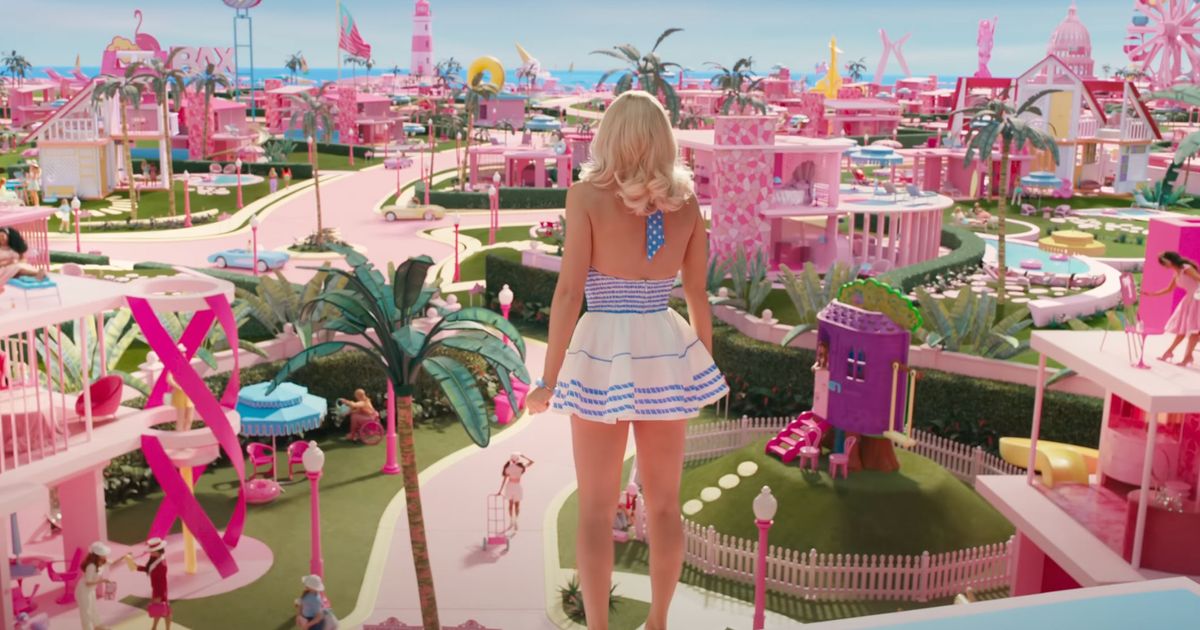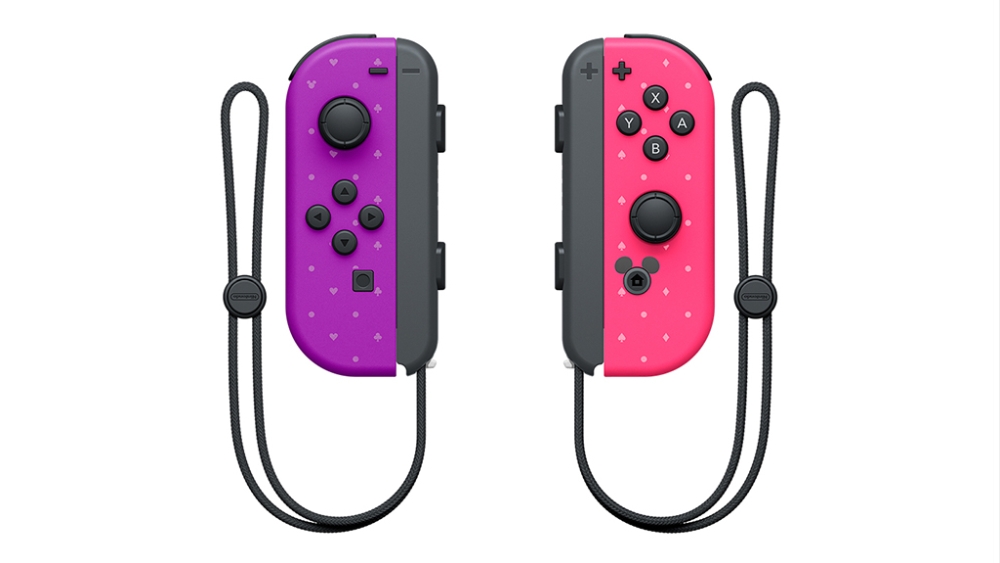
Is This What the Barbie Movie Is About Or Am I Crazy?
It’s summer-movie blockbuster season, which in 2023 means one thing: Barbenheimer is nigh. And with the dawn of the year’s most talked-about double feature imminent, we decided to take a step back and think about what Barbie is really, truly about. So far, we know what we know (Ryan Gosling plays Ken, Simu Liu plays Ken, and one of your favorite actresses plays a version of Barbie; the soundtrack is fun; the merch is endless), but we don’t know what we don’t know. Here are four theories that may make you see Barbie Land a little differently ahead of the film’s July 21 premiere.
Barbies As Catharsis
I awoke a recent morning gasping for air like a precog in Minority Report, drowning in haunting visions of the near future. Specifically, I was having an active premonition about the Barbie movie, which, tragic, get a life, but here we are. Our intrepid Jason Frank has been gathering pink string and hanging it on the proverbial corkboard for months in an attempt to understand what the hell Greta Gerwig and Noah Baumbach are up to, and something deep in my subconscious has suddenly informed me that the Barbie movie is not just an allegory for the onset of puberty and burgeoning self-awareness, but an actual story about young girls going through puberty/becoming self-aware and grafting that process onto their dolls as a means of catharsis. In other words, I don’t think the movie is really about “Barbie” as a character as much as it is about Barbie owners past, present, and future, all processing their own sexual awakening, mortality, sense of shame, and awareness of the chaotic futility of the universe as they come of age and slowly detach from their childlike selves (and subsequently their Barbies, who must then process their own grief and abandonment, maybe?).
Support for this theory includes, but is not limited to: Greta Gerwig including Reviving Ophelia, a book about the unique struggles of American adolescent girls, as a reference point; the purposefully wooden/childlike dialogue we’ve seen in the trailers (“’Cause we’re boyfriend and girlfriend”); the “childlike crayon drawing” illustrating Barbie’s “make-believe journey”; the teaser that referenced 2001: A Space Odyssey (the evolution of man, etc.); and Will Ferrell being cast yet again as a meta-character in charge of a toy universe (will there be overlap with The Lego Movie, which also revealed itself to be a story about real-world kids playing with toys?). More specifically, I think Margot Robbie’s Barbie’s owner is realizing that she might be queer, based on the Indigo Girls music she (ostensibly) plays for Barbie during her road trip and the fact that Kate McKinnon’s Barbie dangles a Birkenstock in front of her face. If this is all wrong, then, uh, it was all just a dream all along. —Rachel Handler
Barbie Kills God
“Barbie was invented first,” is what Greta Gerwig told Vogue for Margot Robbie’s cover story back in May. “Ken was invented after Barbie, to burnish Barbie’s position in our eyes and in the world. That kind of creation myth is the opposite of the creation myth in Genesis.” When someone tells you who they really are, and what they’re really going to do for their Barbie film adaptation, listen. In the trailer, Barbie Land is a Garden of Eden: a paradise whose inhabitants live in a state of innocence and don’t know shame or death. Where fig leaves would otherwise go, they’re as smooth as a Thread poster’s brain. Think of Adam’s stewardship over the animals. Now think of how many Barbies are veterinarians and horse girls. Playing with Barbies really is playing God, and in Gerwig’s reverse cosmology, God is most definitely a girl. When the dolls are in Barbie Land, they’re being played with and possibly spoken to (and through?), but they don’t have agency.
In Gerwig’s empowering update to the flawed source material (by which I mean the Bible, not Barbie, who is perfect), Barbie’s choice to eat the fruit of knowledge and set out beyond paradise requires agency, and is less a warning about womanly wiles and deviance or whatever. In fact, it reclaims womanly wiles and deviance and folds them right back into our heroine. What is the apple in this scenario? A Birkenstock. What song plays as she approaches Kate McKinnon’s house and drives into the arid desert past Barbie Land borders? “Closer to Fine.” What do Birkenstocks and the Indigo Girls signify? Lilith Fair. Lilith was Adam’s first wife, the first woman, and a demonic witchy lady, who refused to be subservient to a man and left Eden first and fucked up Adam and Eve’s whole situation because she could maybe control snakes or something. (I did not get a good education at Temple Sinai, I’m sorry.) Gerwig is probably reclaiming the Lilith figure here, as so many feminists have done before her. The real-life “creation myth” for Barbie involves her Ultimate Creator, Ruth Handler taking inspiration from a European “gag-gift” escort doll called Lilli. Like Lilith. And the devil laughs.
We know that the driving force of the plot is a break from the Garden of Eden into the cruel sinful real world, because the first teaser alludes to the scene in 2001: A Space Odyssey where monkey-Cain kills monkey-Abel and throws the murder weapon up into the stars, except in this version, it’s girls and dolls. And if girls are Barbie’s God, and Barbie defies them by going into the real world, where she will learn about girls growing old and dying … she’s kind of killing her God. Cool!
And also Ken is there! —Rebecca Alter
Barbie and America
Even more than I imagine this will be a coming-of-age film (à la Lady Bird) I imagine that female friendships (à la Little Women) will be at the dominating theme of Barbie’s story, and America Fererra is going to be a big part of that. Ferrera is making a comeback and we love to see it! Though she’s appeared in quite a few promotional clips for Barbie, she hasn’t been advertised as much as the citizens of Barbie Land because Fererra plays a human named Gloria. However, she’s been on most of the press stops for the movie, including the tour stop in Mexico where she, Margot Robbie, and Ryan Gosling waved to fans from a comically large escalator. Her wardrobe’s juxtaposition to Robbie’s at these stops tells me that I can expect a touching heart-to-heart between Gloria, who probably played with Barbie as a kid, and the doll herself. (At most tour stops, Ferrera has been dressed in neutral tones, while Robbie has been in hot pinks. At the premiere, however, Ferrera wore pink and Robbie wore black. Their arcs are clearly intertwined!) In one of the promotional clips, Gloria recognizes Barbie in the real world, which leads me to believe the plot will be centered around Fererra’s mid-life crisis, as mirrored through Barbie’s loss of innocence and entrance into womanhood. The movie will absolutely be rife with Kenergy, whimsy, and the color pink, but all viewers should expect to leave crestfallen and full of angst as well. —Bella Arnold
The Creation of the Atomic Bomb
It’s no great mystery what Greta Gerwig’s Barbie is about. Set largely in the New Mexico desert, Barbie is a dramatization of the invention of the atomic bomb — the weapon that ended World War II and gave humanity the power to destroy themselves. Ken, a brilliant but conflicted scientist, leads a team of America’s best and brightest as they race to build the bomb before the Nazis do. Featuring an all-star cast, Barbie will examine the horrors of creation and make audiences confront their own existential mortality. Oh, wait, I’ve been watching the wrong trailer. Hold on … Okay, yeah, actually this makes more sense. I was wondering where Margot Robbie was. And that’s not Ryan Gosling, it’s some Irish guy. My mistake. I guess Barbie is about dolls? —James Grebey









![[VIDEO] Gelagat Che Ta Tunggu Aaisyah Bersiap Cetus Perhatian Ramai!-“Tengok Penampilan, Tercampaklah Mak Hang!” [VIDEO] Gelagat Che Ta Tunggu Aaisyah Bersiap Cetus Perhatian Ramai!-“Tengok Penampilan, Tercampaklah Mak Hang!”](https://i0.wp.com/murai.my/wp-content/uploads/2024/04/25DCA8CF-C629-4DCA-8597-2CA8819D9297.jpg?resize=150%2C150&ssl=1)














![[VIDEO] Reaksi Tunku Azizah Sambut Birthday Anakanda Tengku Puteri Jihan, Raih Perhatian Ramai! [VIDEO] Reaksi Tunku Azizah Sambut Birthday Anakanda Tengku Puteri Jihan, Raih Perhatian Ramai!](https://i0.wp.com/murai.my/wp-content/uploads/2024/04/Untitled-design-27.jpg?fit=300%2C300&ssl=1)










![[VIDEO] Nadhir Nasar Sambut Birthday Tengku Ameera Cetus Perhatian Ramai”- Nak Kena Bersaing Dengan Kerabat Pulak, Hmm” [VIDEO] Nadhir Nasar Sambut Birthday Tengku Ameera Cetus Perhatian Ramai”- Nak Kena Bersaing Dengan Kerabat Pulak, Hmm”](https://i0.wp.com/murai.my/wp-content/uploads/2024/04/D3415DF6-2464-4794-880F-841EB898C969.jpg?w=768&ssl=1)































